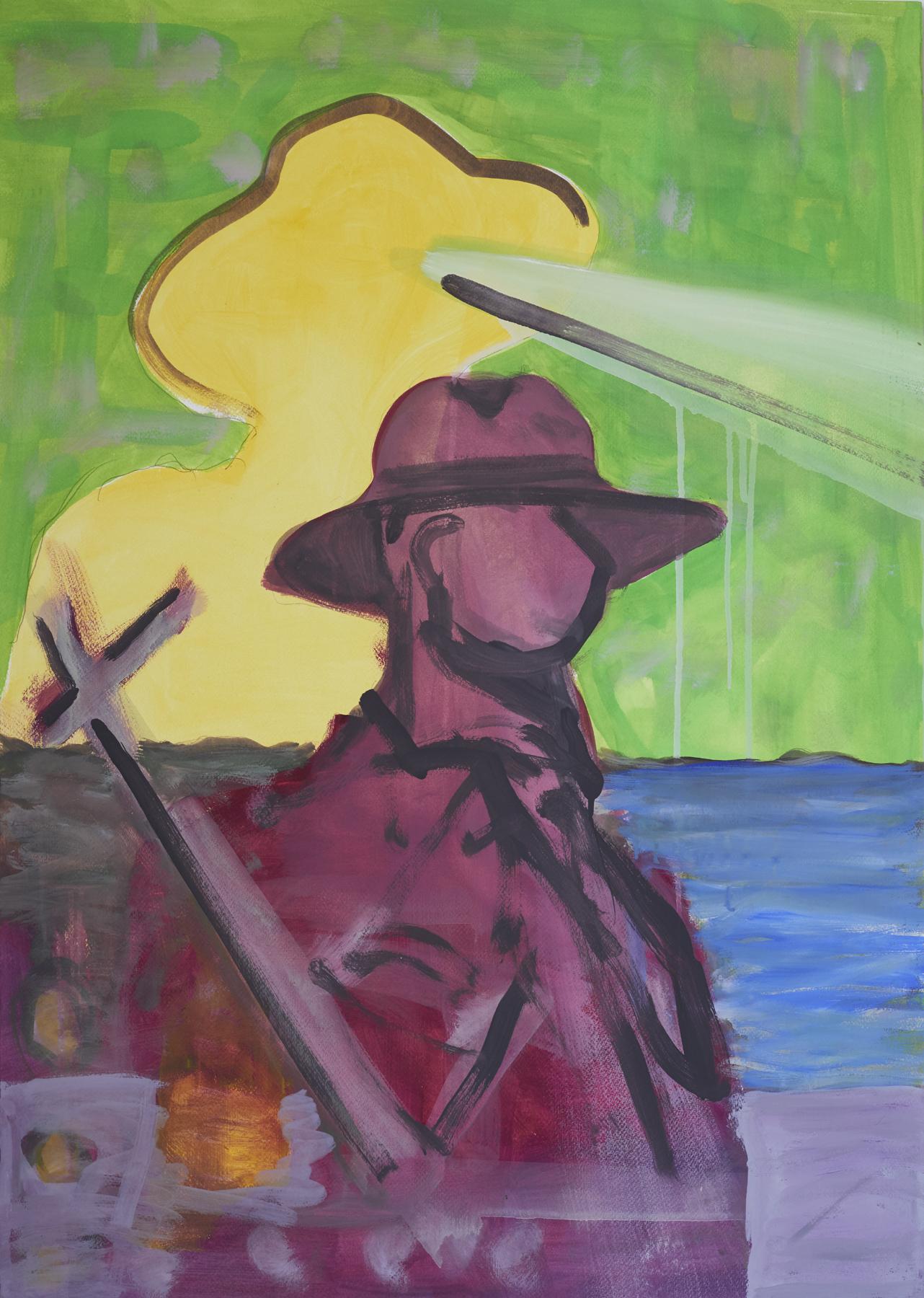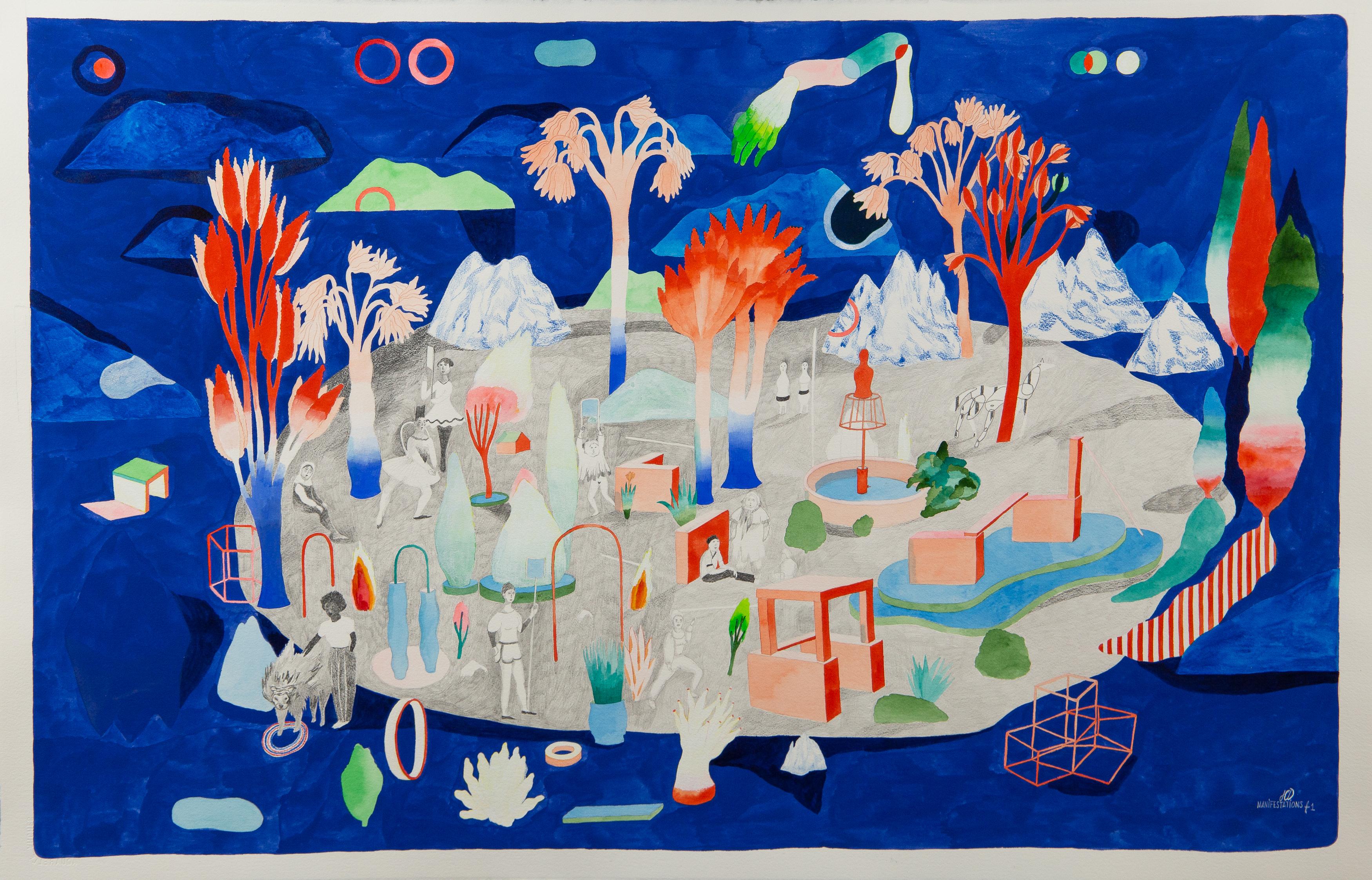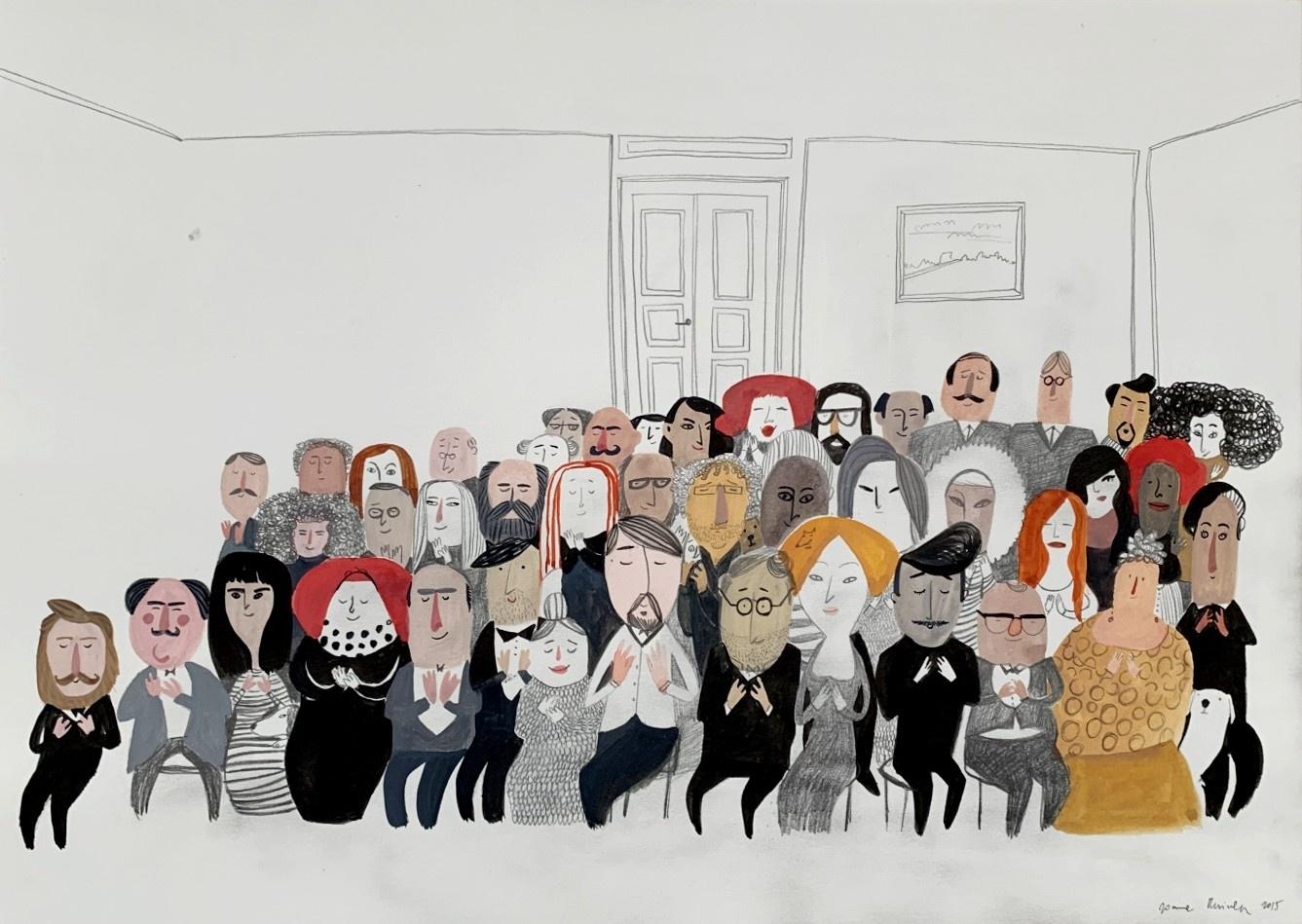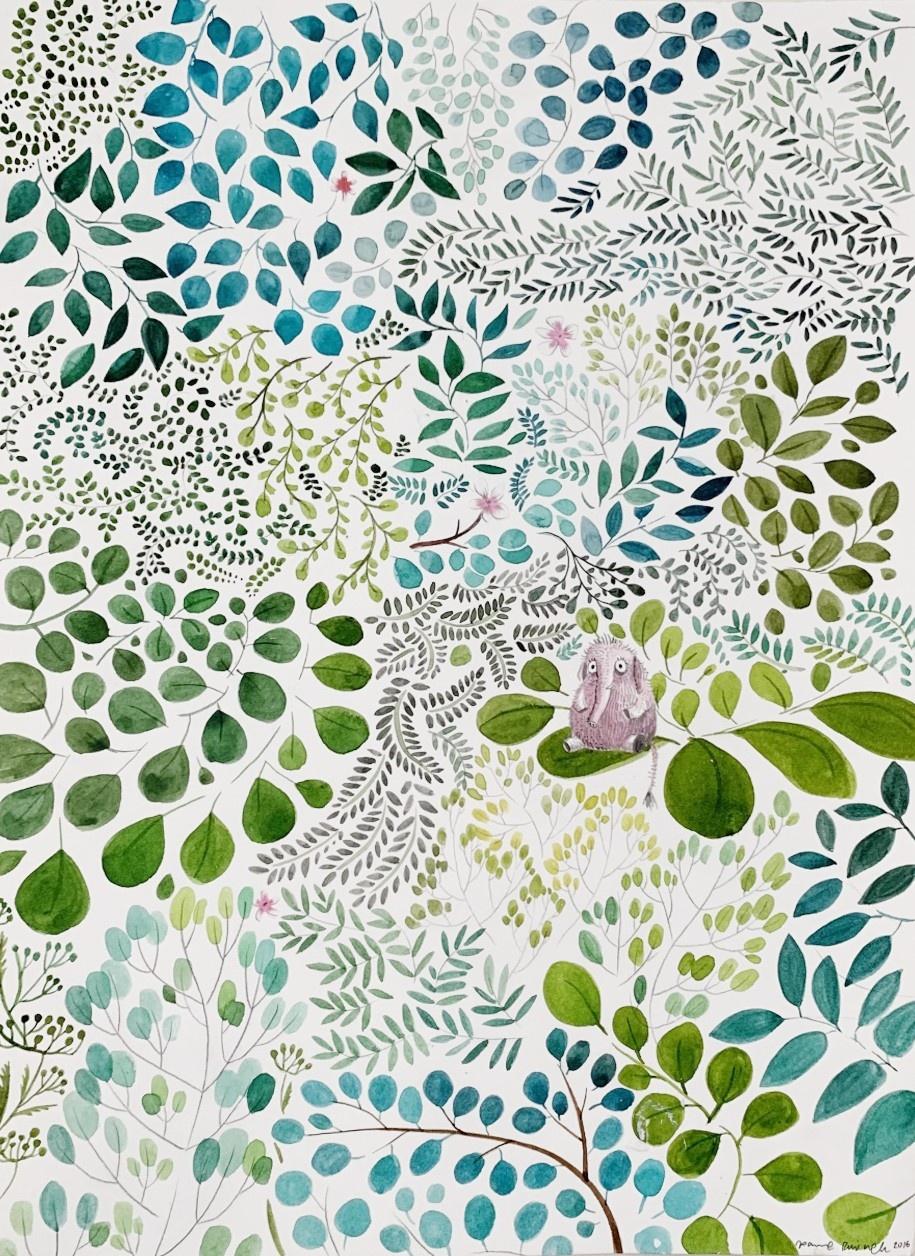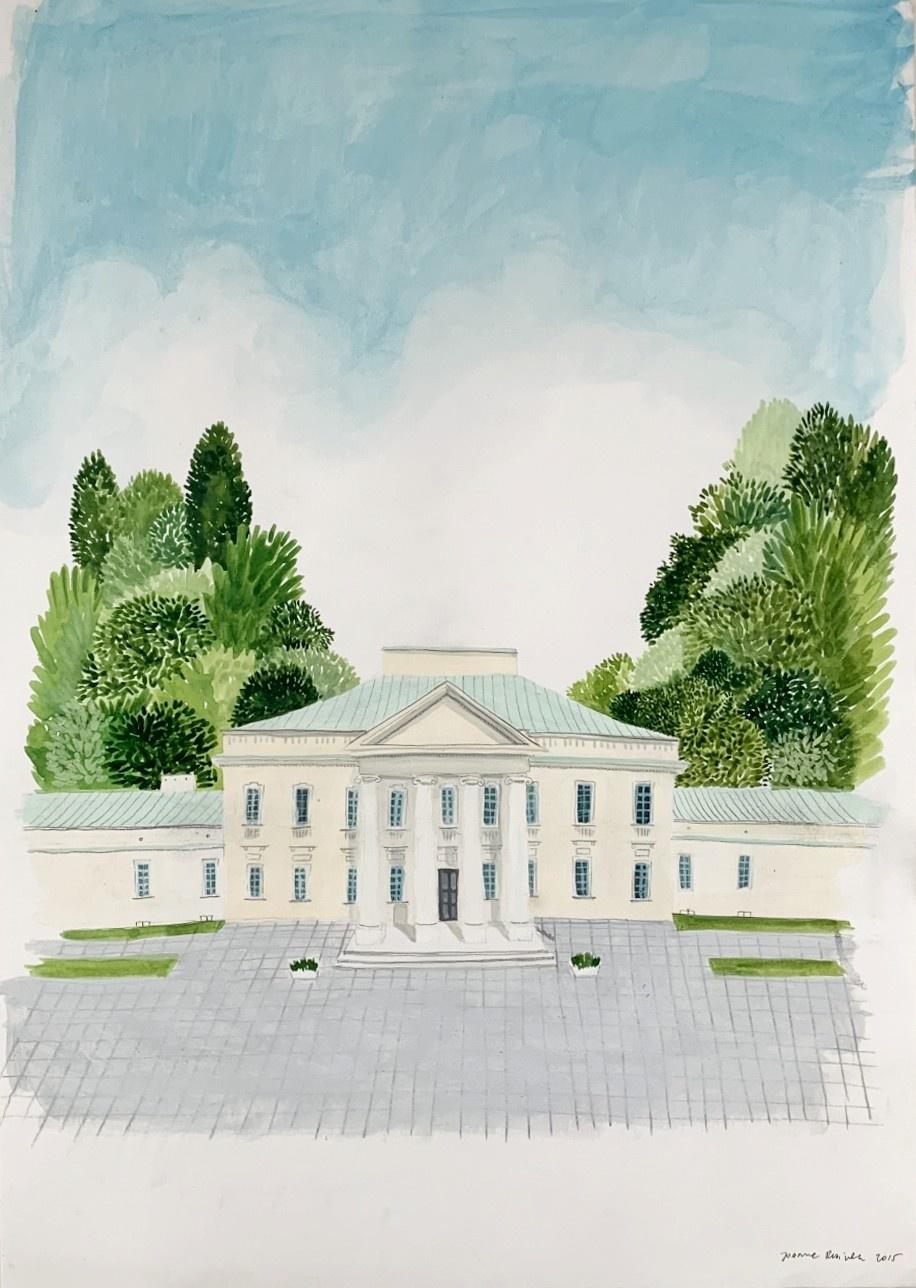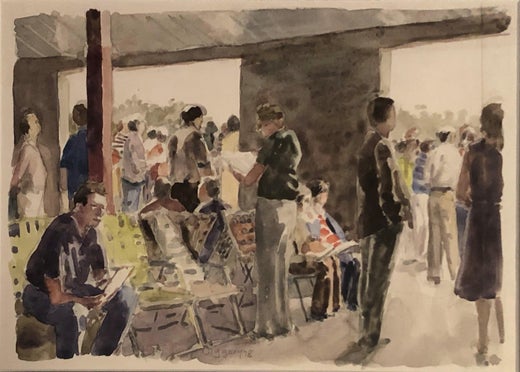Anne DiggoryFive at the Rail, View of Racetrack and Crowd, Saratoga Springs, New Yorkcirca 1978
circa 1978
About the Item
- Creator:Anne Diggory (1951)
- Creation Year:circa 1978
- Dimensions:Height: 12 in (30.48 cm)Width: 12 in (30.48 cm)
- Medium:
- Movement & Style:
- Period:
- Condition:
- Gallery Location:New York, NY
- Reference Number:1stDibs: LU184129908132
Anne Diggory
Anne Diggory was born in 1951. Diggory lives in Saratoga Springs and frequently paints in the Adirondacks and on her travels to places such as Arizona, Alaska and Morocco. She graduated from Yale and has a master of fine arts degree from Indiana University. Diggory has a passion for the landscapes of Hudson River School artists, such as Alexander Helwig Wyant, John Frederick Kensett, William Trost Richards and David Johnson. She was rewarded with a solo exhibition at the Albany Institute of History and Art in April 2019. She exhibits extensively in the New York and New England area. Her work is in numerous private and corporate collections nationwide, including purchases by the Upstate Cancer Center in Syracuse, Phoenix Home Life in Albany, Bessemer Trust in San Francisco and AYCO in Saratoga Springs. Her unique portrayals of the historic Saratoga Racetrack from the late 1970s and 1980s are her most famous works because they focus primarily on the bettors, gamblers, handicappers, spectators, crowds and general atmosphere of the summer horseracing meet, rather than the horses and jockeys.
- ShippingRetrieving quote...Ships From: Larchmont, NY
- Return PolicyA return for this item may be initiated within 3 days of delivery.
- Out of the Sun (Under the Racetrack Grandstand), Saratoga Springs, Anne DiggoryBy Anne DiggoryLocated in New York, NYAnne Diggory (b. 1951) Out of the Sun (Under the Racetrack Grandstand), 1978 Watercolor on paper 7 x 10 inches Signed and dated lower left Provenance: Ac...Category
1970s Contemporary Landscape Drawings and Watercolors
MaterialsPaper, Watercolor, Pencil
- "Sleigh Ride, Winter, " Fletcher Martin, Woodstock, Holiday Scene IllustrationBy Fletcher MartinLocated in New York, NYFletcher Martin (1904 - 1979) Sleigh Ride, Woodstock, New York circa 1955 Watercolor on paper 14 x 11 inches Signed lower right Provenance: James Cox Galler...Category
1950s American Realist Landscape Drawings and Watercolors
MaterialsPaper, Watercolor
- "Medieval Thoughts, Prague, " Alphonse Mucha, Czech Art Nouveau IllustrationBy Alphonse MuchaLocated in New York, NYAlphonse Mucha (Czech, 1860 - 1939) Medieval Thoughts, circa 1890 Wash, ink, and watercolor on paper 11 x 9 inches Signed lower right Provenance: Phillips New York, 19th and 20th ce...Category
1890s Art Nouveau Figurative Drawings and Watercolors
MaterialsWatercolor, Ink, Paper
- "New England Landscape, " James Grabowski, View of Connecticut Hills in the SunLocated in New York, NYJames L. Grabowski (American born 1944) New England Landscape Gouache on paper 27 1/2 x 39 1/2 Signed on the reverse Has a plaque for Arches Paper Award James Grabowski...Category
Late 20th Century Contemporary Landscape Drawings and Watercolors
MaterialsGouache, Paper
- "Tugboat at Dock, " Reginald Marsh, Modern WPA Industrial ShipBy Reginald MarshLocated in New York, NYReginald Marsh Tugboat at Dock, circa 1937 Signed lower right Watercolor and pencil on paper 13 3/4 x 20 inches Housed in a Lowy frame. Provenance: Sotheby'...Category
1930s Modern Landscape Paintings
MaterialsPaper, Watercolor, Pencil
- "Train Station, " Max Kuehne, Industrial City Scene, American ImpressionismBy Max KuehneLocated in New York, NYMax Kuehne (1880 - 1968) Train Station, circa 1910 Watercolor on paper 8 1/4 x 10 1/4 inches Signed lower right Provenance: Private Collection, Illinois Max Kuehne was born in Halle, Germany on November 7, 1880. During his adolescence the family immigrated to America and settled in Flushing, New York. As a young man, Max was active in rowing events, bicycle racing, swimming and sailing. After experimenting with various occupations, Kuehne decided to study art, which led him to William Merritt Chase's famous school in New York; he was trained by Chase himself, then by Kenneth Hayes Miller. Chase was at the peak of his career, and his portraits were especially in demand. Kuehne would have profited from Chase's invaluable lessons in technique, as well as his inspirational personality. Miller, only four years older than Kuehne, was another of the many artists to benefit from Chase's teachings. Even though Miller still would have been under the spell of Chase upon Kuehne's arrival, he was already experimenting with an aestheticism that went beyond Chase's realism and virtuosity of the brush. Later Miller developed a style dependent upon volumetric figures that recall Italian Renaissance prototypes. Kuehne moved from Miller to Robert Henri in 1909. Rockwell Kent, who also studied under Chase, Miller, and Henri, expressed what he felt were their respective contributions: "As Chase had taught us to use our eyes, and Henri to enlist our hearts, Miller called on us to use our heads." (Rockwell Kent, It's Me O Lord: The Autobiography of Rockwell Kent. New York: Dodd, Mead and Co., 1955, p. 83). Henri prompted Kuehne to search out the unvarnished realities of urban living; a notable portion of Henri's stylistic formula was incorporated into his work. Having received such a thorough foundation in art, Kuehne spent a year in Europe's major art museums to study techniques of the old masters. His son Richard named Ernest Lawson as one of Max Kuehne's European traveling companions. In 1911 Kuehne moved to New York where he maintained a studio and painted everyday scenes around him, using the rather Manet-like, dark palette of Henri. A trip to Gloucester during the following summer engendered a brighter palette. In the words of Gallatin (1924, p. 60), during that summer Kuehne "executed some of his most successful pictures, paintings full of sunlight . . . revealing the fact that he was becoming a colorist of considerable distinction." Kuehne was away in England the year of the Armory Show (1913), where he worked on powerful, painterly seascapes on the rocky shores of Cornwall. Possibly inspired by Henri - who had discovered Madrid in 1900 then took classes there in 1906, 1908 and 1912 - Kuehne visited Spain in 1914; in all, he would spend three years there, maintaining a studio in Granada. He developed his own impressionism and a greater simplicity while in Spain, under the influence of the brilliant Mediterranean light. George Bellows convinced Kuehne to spend the summer of 1919 in Rockport, Maine (near Camden). The influence of Bellows was more than casual; he would have intensified Kuehne's commitment to paint life "in the raw" around him. After another brief trip to Spain in 1920, Kuehne went to the other Rockport (Cape Ann, Massachusetts) where he was accepted as a member of the vigorous art colony, spearheaded by Aldro T. Hibbard. Rockport's picturesque ambiance fulfilled the needs of an artist-sailor: as a writer in the Gloucester Daily Times explained, "Max Kuehne came to Rockport to paint, but he stayed to sail." The 1920s was a boom decade for Cape Ann, as it was for the rest of the nation. Kuehne's studio in Rockport was formerly occupied by Jonas Lie. Kuehne spent the summer of 1923 in Paris, where in July, André Breton started a brawl as the curtain went up on a play by his rival Tristan Tzara; the event signified the demise of the Dada movement. Kuehne could not relate to this avant-garde art but was apparently influenced by more traditional painters — the Fauves, Nabis, and painters such as Bonnard. Gallatin perceived a looser handling and more brilliant color in the pictures Kuehne brought back to the States in the fall. In 1926, Kuehne won the First Honorable Mention at the Carnegie Institute, and he re-exhibited there, for example, in 1937 (Before the Wind). Besides painting, Kuehne did sculpture, decorative screens, and furniture work with carved and gilded molding. In addition, he designed and carved his own frames, and John Taylor Adams encouraged Kuehne to execute etchings. Through his talents in all these media he was able to survive the Depression, and during the 1940s and 1950s these activities almost eclipsed his easel painting. In later years, Kuehne's landscapes and still-lifes show the influence of Cézanne and Bonnard, and his style changed radically. Max Kuehne died in 1968. He exhibited his work at the National Academy of Design, the Art Institute of Chicago, the Carnegie Institute in Pittsburgh, the Memorial Art Gallery of the University of Rochester, and in various New York City galleries. Kuehne's works are in the following public collections: the Detroit Institute of Arts (Marine Headland), the Whitney Museum (Diamond Hill...Category
1910s American Impressionist Landscape Drawings and Watercolors
MaterialsPaper, Watercolor
- Swiss Contemporary Art by Olivier Furter - Mensch IIILocated in Paris, IDFGouache on paper - Framed 102 x 72 x 3 cmCategory
2010s Contemporary Figurative Drawings and Watercolors
MaterialsPaper, Gouache
- Disappearances / Extinctions #1 Hélène Duclos 21st Century drawing landscape artBy Hélène DuclosLocated in Paris, FRThis drawing is part of the current exhibition entitled "The fantastic story of the liquid mountain" at Claire Corcia Gallery in Paris. The liquid mountain is populated by living be...Category
2010s Contemporary Landscape Drawings and Watercolors
MaterialsColor Pencil, Graphite, Paper, Gouache
- Demonstration #1 Hélène Duclos, 21st Century, Contemporary figurative art blueBy Hélène DuclosLocated in Paris, FRGouache, coloured pencil and graphite on paper Signed lower right Unique work 1 / Hélène DUCLOS, 2016 – Artist Statement “Questioning the human condition and the position of being ...Category
21st Century and Contemporary Contemporary Figurative Drawings and Water...
MaterialsGouache, Paper
- Who needs a mammoth - Book illustration, Polish artist, Watercolor paintingBy Joanna RusinekLocated in Warsaw, PLIllustration for book by Agnieszka Frączek 'Who needs a mammoth' JOANNA RUSINEK Printmaker, illustrator of children's books, author of press ill...Category
2010s Contemporary Figurative Drawings and Watercolors
MaterialsPaper, Watercolor, Pencil
- Belvedere for children - Book illustration, Polish artist, Watercolor paintingBy Joanna RusinekLocated in Warsaw, PLIllustration for book by Michał Rusinek 'Belvedere for children' JOANNA RUSINEK Printmaker, illustrator of children's books, author of press ill...Category
2010s Contemporary Figurative Drawings and Watercolors
MaterialsPaper, Watercolor
- Stenka's songs - Book illustration, Polish artist, Watercolor paintingBy Joanna RusinekLocated in Warsaw, PLIllustration for book by Barbara Stenka 'Stenka's songs' JOANNA RUSINEK Printmaker, illustrator of children's books, author of press illustratio...Category
2010s Contemporary Figurative Drawings and Watercolors
MaterialsPaper, Watercolor, Pencil
